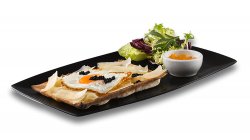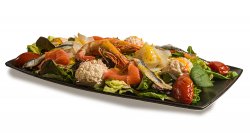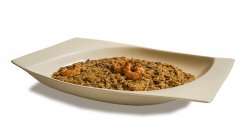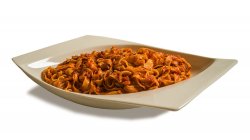
Alessandria - Tradition and Local Flavor
Alessandria, which borders with the regions of Lombardy, Liguria and Emilia-Romagna, boasts a unique Mediterranean climate more typical of southern Italy. Flanked to the south by the Ligurian Apennines and to the north by Monferrato, famous for its vineyards, the region boasts an extremely diverse landscape, crisscrossed by exuberant rivers, stunning valleys and lush chestnut, oak and beech forests.
The namesake capital of the province sits between the rivers Tanaro and Bormida. Established in 1168 as Civitas Nova, Alessandria was subsequently renamed in honor of Pope Alexander III. Although humans had settled in the area prior to the founding of the city, Alessandria was originally built as a fortress to defend the Lombard League from attacks emperador del Sacro Imperio Romano Germánico, by Frederick I. Between 1174 and 1175, the Germanic Empire besieged the city. Legend has it that a shrewd peasant named Gagliaudo saved it from an inevitable defeat. Gagliaudo fed his cow with the last grain in the city and left the fortress to meet the enemy army. When the Imperial forces captured him, they killed his cow and found the grain in its stomach. The farmer convinced them the city had such abundance of grain that exceeded its ability to store it. Emperor Frederick I thought that the siege would be too protracted and decided to withdraw its troops from Alessandria. A statue in honor of Gagliaudo stands in the city's cathedral. Alessandria was declared a free city in 1198, sparking decades of conflicts with other communes until 1348, when the Visconti family took over and ruled the region from Milan. It was first ruled by the Sforzas, then by the House of Savoy, who annexed the area to the Piedmont region in 1707. Though the French conquered it in 1800, the Savoyards regained control of the territory in 1814 under the Kingdom of Sardinia.
Despite having belonged to France for a short period, Alessandria still has a strong French influence. Strategically located, it has always been a major trade and transportation hub. Roman and medieval ruins bear witness to its glorious past.
With a long-standing wine tradition, savor the province of Alessandria through its regional wines. Barbera is the most common, red wine grape variety in Piedmont, with 2 DOCG and 5 DOC wines. As for white wines, the Cortese di Gavi is a DOCG wine and Timorasso a DOC.
Its cuisine reflects local traditions. Indeed, its cheeses are a good example of this. Robiola cheese is still made using artisan methods that date back centuries to Celtic-Ligurian farmers. Robiola cheese, which is made from cow, goat and sheep milk, is primarily produced in the mountainous region of Suol D'Aleramo. Another legendary cheese is Montebore, made with cow and sheep milk. With over eleven centuries of tradition, it was on the verge of disappearing when it was presented at the International Cheese Fair, and won recognition among international experts.
Alessandria's traditions are also influenced by its surroundings. The more to the south, the more reminiscent of Liguria are its flavors and aromas. They even have "Novese focaccia”, their own version of "Genovese focaccia". Other dishes of Ligurian influence are "farinata", "pansotti", "corzetti" and "ravioli al tocco”.
Some of the province's cold meats are recognized internationally. Worthy of note is the "filetto baciato di Ponzone" (meaning "kissed steak"), a salami typical of the Bormida Valley, which consists of a pork fillet wrapped with the salami mixture and aged in brine for about two months. Another popular cold cut is "testa in cassetta", made with pig’s tongue, fat from the cheeks and lean meat from the head and a blend of different salamis.
However, there is much more to Alessandria than antipasto. Some of its most memorable dishes are linked to specific historical events, including the traditional "Chicken Marengo", which pays tribute to the place where Napoleon won one of his most important battles against the Austrian army. According to popular myth, Napoleon's chef cooked the dish after the Battle of Marengo from whatever ingredients he could gather, since the Austrians had cut off French supply lines. He foraged for ingredients from local farmers and created a dish with chicken, mushrooms and river shrimp. Napoleon enjoyed the dish so much that he had it served after every battle, which led to the name "Chicken Marengo”. Another dish of great agricultural tradition is the "rabaton", small meatballs made with ricotta, spinach and egg. "Rabaton" may be baked or served in broth. These dishes are a reminder that Alessandria's centuries-old recipes are still present in the culinary heritage handed down for generations.
For travelers with a sweet tooth, the renowned confectionery of the province will meet all expectations. Its specialties include a variety of cookies: "krumiri", typical of Monferrato, and undoubtedly the most famous biscuit in Alessandria; the "amaretti", also very popular, with a different version in almost every city; and "biscotti della salute", very similar to the Genovese "biscotti del Lagaccio". We would be remiss not to recommend the "Lacabòn", a stick-shaped artisan candy made with honey, sugar and egg white.
Undoubtedly, this province offers the chance to taste the best, rural, culinary tradition, reminding us that only the finest ingredients can make the best recipes. Alessandria has them. Unsurprisingly, we continue our journey with a good taste in our mouths.
44.9072727, 8.6116796
Alessandría
Alessandria (or Lissandria in Piedmontese) is an Italian city in the Piedmont region, and capital of its eponymous province. It is situated on the banks of the River Tanaro.
City: 90.532 hab.
Surface area: 203,97 kmª
In our menu
Categories









